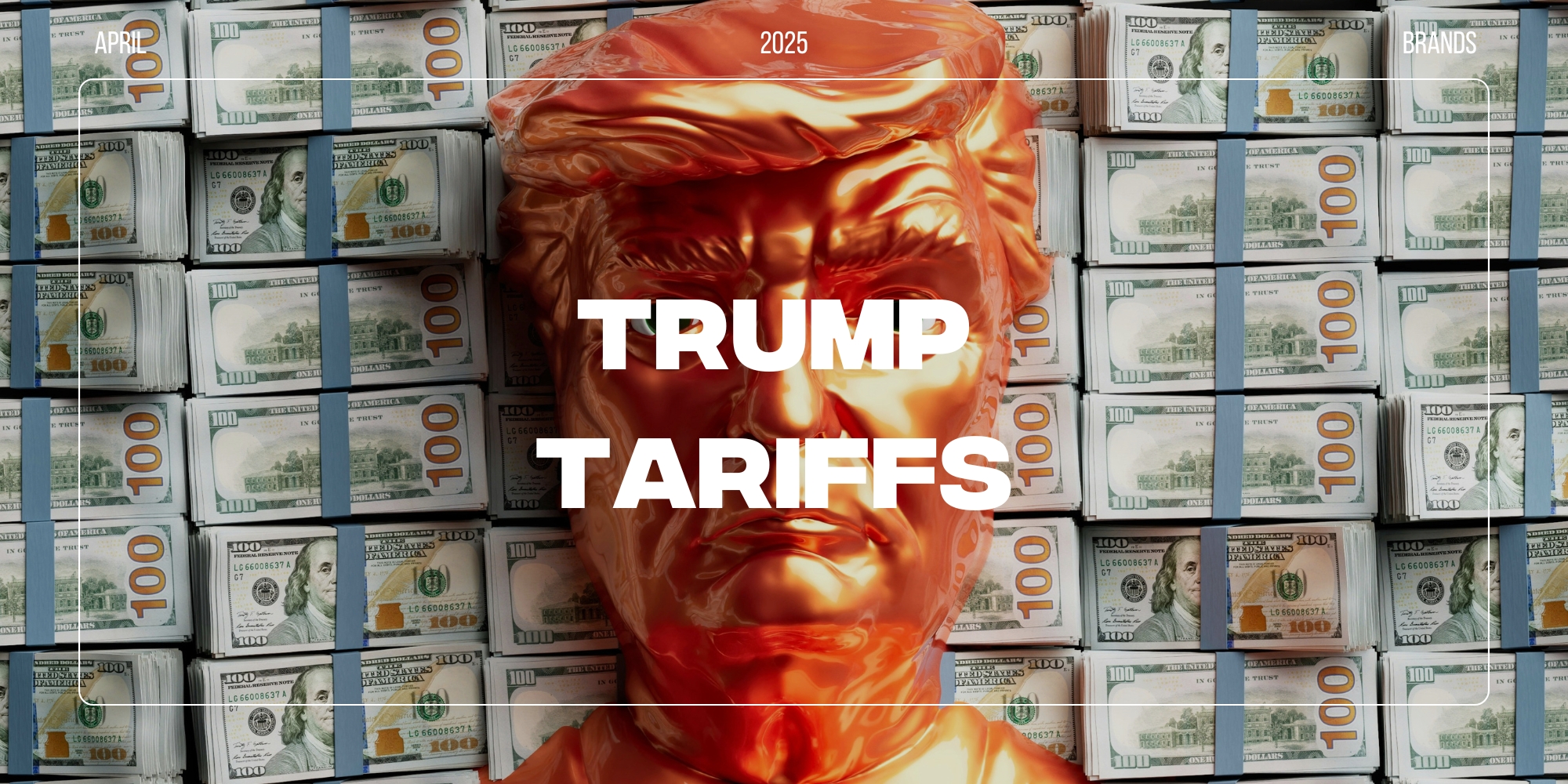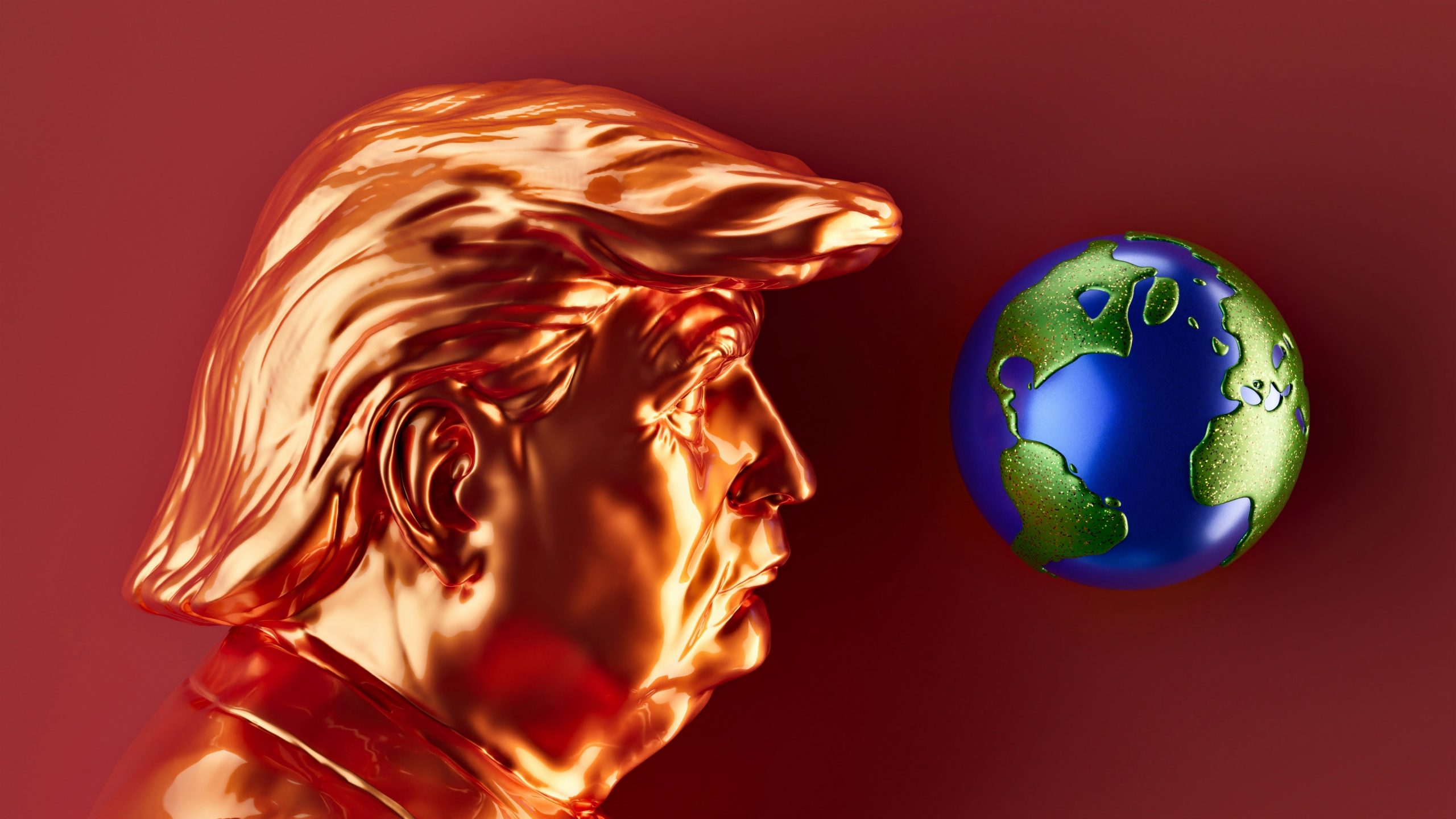What Impact Will the Trump Tariffs Really Have on the Creator Economy?
Apr 24, 2025
Thought Leadership

Unless you’re a social media hermit or skillfully avoid politics in all discourse, you’ve likely heard about the new Trump tariffs dominating conversations across social media and news outlets. Under Donald Trump’s administration, these tariffs have sparked panic, confusion, and anticipation across industries. If you’re uncertain about what the Trump tariffs are, how they’ll affect your favourite brands and products, and their impact on consumers, we’ve got you covered.
What are the New Trump Tariffs?
In an escalating trade war, President Trump has implemented up to 145% tariffs on Chinese goods, 25% on products from Mexico and Canada, and a 10% tax on imports from most other countries. With the U.S. importing approximately $690 billion in goods from China in 2023 alone, the scale of these tariffs is unprecedented. Trump argues these measures will strengthen US manufacturing, boost the economy, and protect American jobs. However, these new tariffs have created chaos and tension among once-allied nations, with prices expected to rise accordingly.
Put simply, tariffs are taxes on imported goods. Trump’s rationale is that tariffs will encourage US consumers to purchase more American-made products, increasing tax revenue and stimulating the US economy. He contends that America has been “taken advantage of” by “cheaters” and “pillaged” by foreigners, and now aims to significantly reduce the gap between the value of goods the US imports versus what it exports.
While many American-owned brands influence consumer choices, brands hailing from the UK, Europe, and elsewhere also dominate various industries. Unfortunately, these widespread tariffs will create several significant downstream effects, including:
Price increases: Imported products will become more expensive as importers pass tariff costs to consumers. Data shows that in previous tariff implementations, approximately 75-95% of tariff costs were passed on to U.S. consumers rather than absorbed by foreign exporters. Low-income households will feel these effects most severely. Even domestic products may increase in price due to reduced competition.
Economic ripple effects: Industries using imported materials will face higher costs—construction companies paying more for steel, for example. Consumers will have less purchasing power as more income goes toward higher-priced goods.
Product availability and quality: Foreign products may become scarce in the US market. While this should encourage domestic innovation, it could backfire. Supply chain disruptions can lead to delays and shortages.
Lower-income households are disproportionately affected since they spend a higher percentage of their income on goods. The impact varies widely by product category and specific tariff rates, with data from the Tax Foundation showing that the previous round of tariffs under Trump (2018-2019) cost the average American household approximately $1,277 annually.

How Does this Affect the Creator Economy?
Since the introduction of higher-percentage tariffs, economic pressure has spread among business owners, consumers, and those who make their living in the ever-growing creator economy, which was valued at approximately $250 billion globally in 2024 and is projected to reach $480 billion by 2027.
Content creators earn their income through product advertising, brand deals, and influencer campaigns. They rely on social media platforms to share moments of their lives, but also favorite products and brands, and with TikTok—a social media giant whose parent company is based in China—already under scrutiny with the potential US TikTok ban, the new Trump tariffs add yet another complication. This is particularly significant considering TikTok has over 170 million U.S. users and generates an estimated $9-12 billion in revenue annually for American creators.
These tariffs have created significant ripple effects throughout the beauty and fashion industries, reshaping the environment in which influencers operate. Beauty industry imports from China were valued at approximately $3.9 billion in 2023, with tariffs potentially affecting 60-70% of product components in many cosmetic formulations. These trade policies, particularly those targeting Chinese imports, have disrupted the global supply chains that many brands depend on for ingredients, components, and manufacturing.
As these costs flow through the system, brands face tough choices about absorbing extra expenses or passing them to consumers, creating an increasingly challenging landscape for marketing partnerships.
For beauty brands, the Trump tariffs have forced a rethinking of everything from ingredient sourcing to packaging. Many popular formulations rely on globally-sourced components that now carry additional costs. This has led some brands to reformulate products, find alternative suppliers, or even discontinue certain goods.
For influencers, this means navigating a shifting landscape of changing formulations and price points when recommending products to their audiences. If influencers have built a niche following based on affordable products at attainable prices, promoting products that have increased in cost might prove challenging
Fashion brands face similar hurdles, as the Trump tariffs affect textiles, manufacturing equipment, and finished goods. The global supply chains that made fast fashion possible are now under strain, and many brands are diversifying manufacturing locations, raising prices, or moving toward domestic production where feasible. These changes directly impact which products influencers can promote and how they position them to increasingly price-conscious audiences.
And What About Marketers and Their Budgets?
The financial pressure from tariffs has noticeably affected marketing budgets, with research showing that during economic pressure periods, marketing budgets typically contract by 11-20%, with influencer spending often seeing the most volatility. Brands are becoming more selective about influencer partnerships. We’re seeing a shift toward ROI-focused collaborations with clear conversion metrics rather than broader awareness campaigns – 73% of brands are now prioritising conversion metrics over reach metrics for influencer partnerships during economic uncertainty.
This approach favours influencers who can demonstrate tangible results over multiple platforms with a highly targeted audience. For many brands, micro-influencers with a dedicated niche following, that can prove high rates of conversion, now represent better value than those with larger but less-engaged audiences. Data confirms this strategy, as micro-influencers (10,000-100,000 followers) generate 60% higher engagement rates and 22% higher conversion rates compared to macro-influencers, making them more attractive during budget constraints.
Brands are evolving their content strategies in response to these economic changes. Influencers who effectively communicate product value, durability, and quality are becoming more valuable as brands need to justify higher price points. This means greater opportunities for luxury creators and those who promote quality over quantity.
There’s also a growing demand for transparent content that addresses price increases and changes within the industry whilst maintaining consumer trust. Influencers will need to adapt by focusing on organic and educational content that helps followers understand the broader economic factors affecting their favourite brands.
@aimeesmalex I like to keep things light hearted, but the idea of a large majority of my business not being able to shop this drop is really gut wrenching. We’ve not only worked so hard on this collection, but also the last 5 years building this brand globally… to have it just taken away/played with so recklessly? Odd Muse resort is coming, and all brands can do is stay hopeful. We cant make big logistic decisions in his power, because you can go through that all for him just to turn it off the next day. It’s a clear abuse of power, hut unfortunately it’s the power he holds that he wants us all to know about #newyork #oddmuse #oddmuselondon #tarrifs
Additionally, brands are now considering influencers based on their geographic location for campaigns, as brands are prioritising markets with fewer trade barriers or stronger purchasing power. Campaigns will now require more careful, strategic planning to account for product availability, price differences, and regional economic conditions. This has created both challenges and opportunities for influencers with a diverse, international audience or those who hold a stronger appeal within a specific region.
But is it Really all That Bad?
Interestingly, these economic pressures have created new opportunities within the influencer ecosystem. Domestically produced “tariff-resistant” brands are increasingly seeking influencer partnerships to highlight their local production advantages. Made-in-USA brands saw a 32% increase in consumer interest following previous tariff implementations, creating new partnership opportunities for influencers focused on domestic products.
Sustainable and ethical brands that already operate with higher price points, but stronger value propositions are finding that the narrowing price gap with mainstream brands makes their offerings more competitive, opening new avenues for influencers focused on conscious consumption. This is particularly significant as sustainability-focused brands typically experience 30% less price sensitivity among their core consumers during economic downturns.
Domestically produced beauty and fashion items could see a 15-25% competitive advantage as tariffs narrow price gaps with imported alternatives, creating an expanding market segment for influencers to explore.
For influencer marketing agencies and the brands they serve, adaptability is essential. The most successful campaigns will acknowledge the changing economic landscape while developing approaches that deliver value to both brands and consumers. Influencers who can authentically address these shifts, educate their audiences about product value beyond price, and maintain transparency about economic realities will likely emerge stronger through this period of significant transformation.
Written by: Arri Grewal
Our influencer marketing agency and social agency are located worldwide, with our agency network based in the USA, UK, UAE and China.
If you want to find industry insights, visit our influencer marketing and social media blogs.
@sociallypowerful
Social And Influencer Marketing News + Insights
Get in touch
We'll show you how to start powerful conversation, drive social engagement, build your brand, hit sales targets or meet other goals you have, wherever you are in the world.
Work with us





